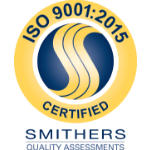Air Handling for Education
The University of Texas at Austin-The Tower
Not all air handling unit installation sites are easily accessible; some can be in what appear to be nearly impossible locations for access.
For example, the University of Texas at Austin was faced with this scenario when they needed to replace the air handling unit serving the campus’ Main Building. Known as ‘The Tower’, this building is a 30-story structure with an air handling unit located on the 25th floor in a difficult location behind the clock on the tower.
The tower is the namesake of the university and is what everyone looks to as the symbol of UT, so the university wanted to make sure the unit was installed without damaging the structure. The Tower is also located on a main pathway of the campus, so external large rigging was out of the question due to the risk of something falling on the students below. The only other access to the location was a 3-by-3-foot elevator in the tower – access to get equipment the size of a school but to the mechanical space.
A SiteBilt® solution was determined for the replacement of the unit with simple rigging and elevator access during the campus’s two-week holiday break; installation would be completed by the start of classes after the break.
This example illustrates many of the essential points of a successful retrofit. Keep these tips in mind when considering a retrofit project.
- Have a single point of contact. Choose a company that takes responsibility for the entire project. Having multiple contracting entities can result in a blame game when problems arise on site. The company should also have a representative on site supervising the installation.
- Employ creative solutions. Your air handling unit provider should be able to design for difficult situations, such as the University of Texas tower, with unique processes and creative engineering. There is always a solution, and you shouldn’t have to dismantle the building to find it. When most people think of air handling units, they think of a rectangular box, but it doesn’t have to be that way units can be configured to fit the space.
- Install a quality product. A quality unit that is made of aluminum won’t rust, rot or corrode. The result is less maintenance, which is especially important on a site with difficult access. Ideally, the unit should last the life of the building; the life expectancy of a modular steel unit is 15 to 20 years, while a custom steel unit is 25 years. An aluminum unit, however, has a life expectancy of 50 years or more.
- Look at the cost. A quality, custom aluminum unit may cost more upfront, but when compared to energy savings and repair or replacement costs, it saves money in the long run.
- Build on site. This is especially important for a retrofit because it eliminates costly, disruptive demolition and logistical headaches due to expensive crane or helicopter permits when bringing an already-built unit to the site. Make sure the unit is sourced from a manufacturer regularly engaged in the fabrication of air handling units and has the same quality and warranty as a factory-built unit.


